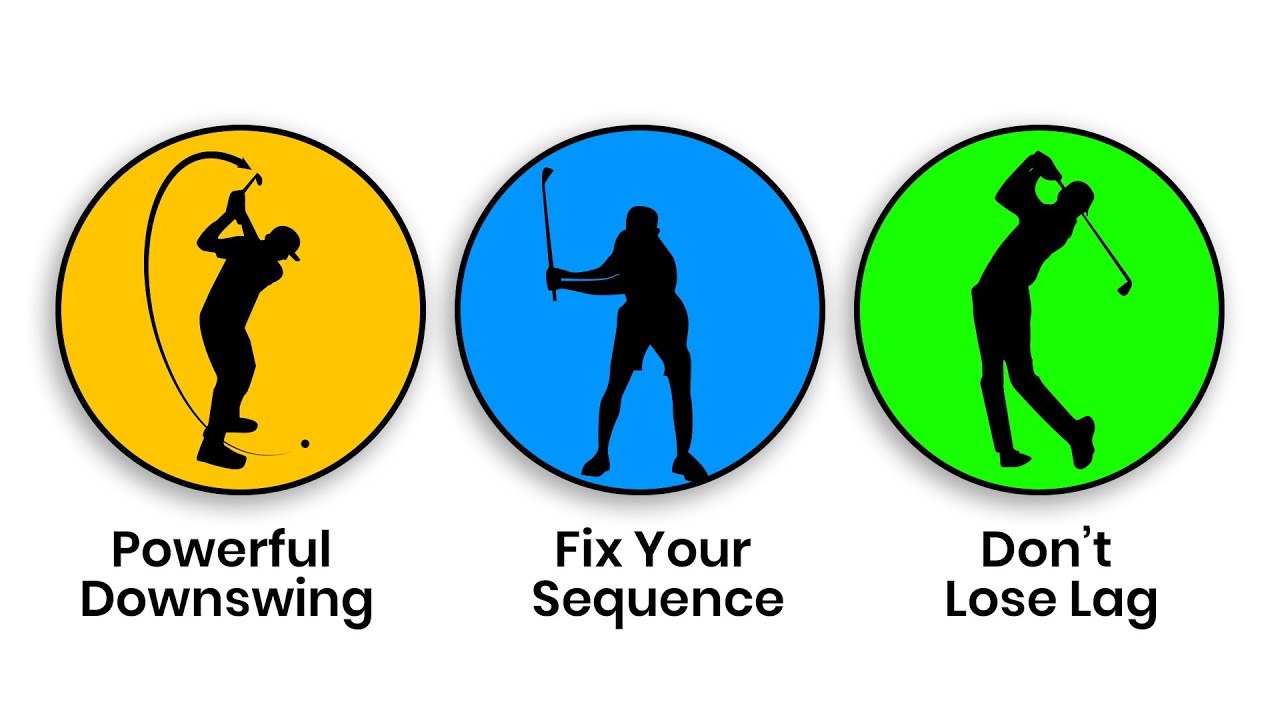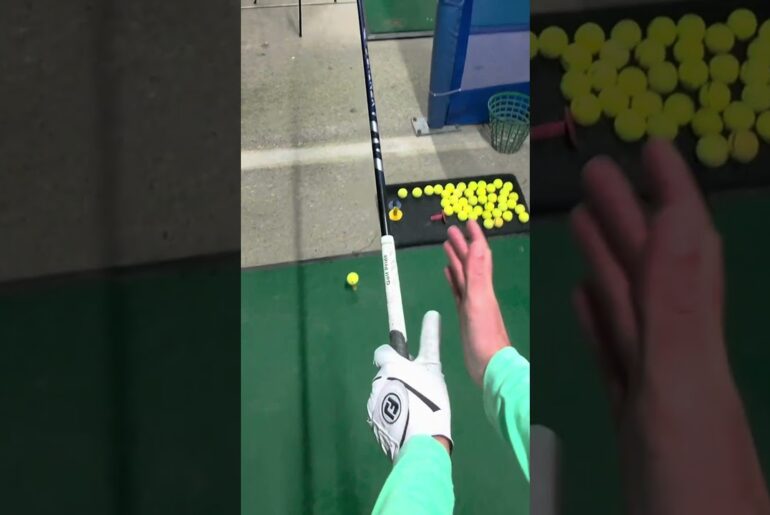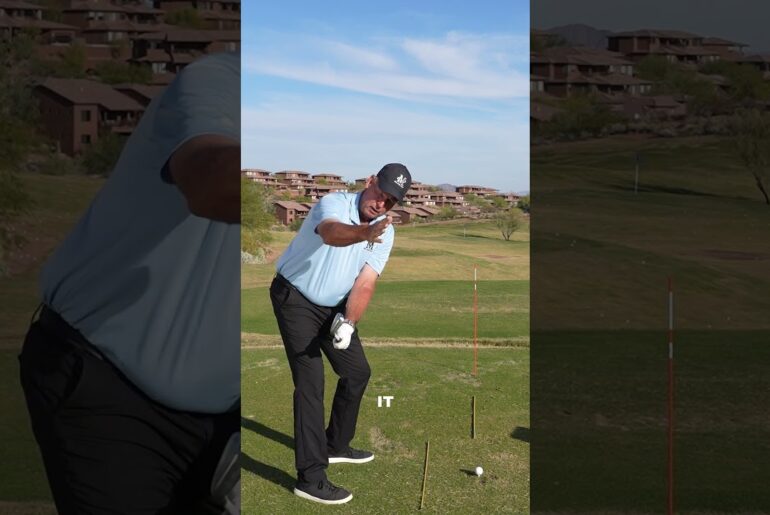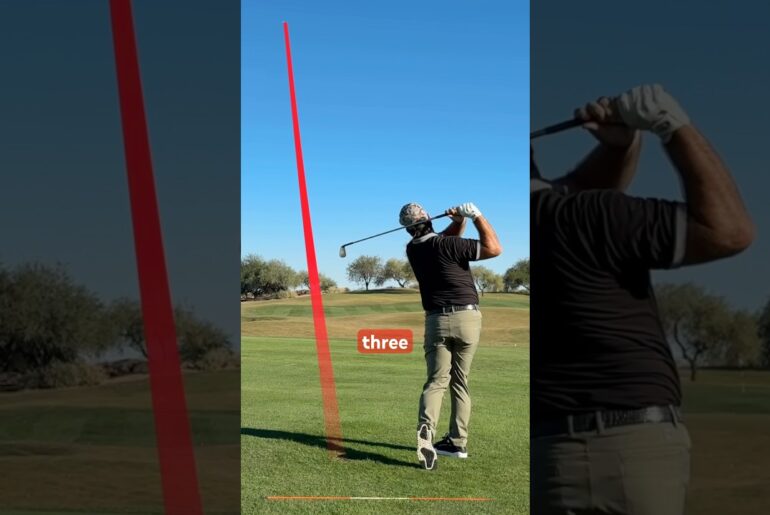The Downswing Sequence Explained: Boost Power & Accuracy in Your Golf Swing
Struggling with weak shots or inconsistent ball flight? The problem likely lies in your downswing sequence. In this video, we break down the exact chain reaction that separates smooth, powerful swings from frustrating mis-hits—along with drills trusted by the pros to fix it.
What You’ll Learn:
Why “shift, turn, rise” is the secret to a pro-level downswing
The truth about lag—and how most golfers lose it too early
Drills like the Motorcycle Drill & Alignment Stick to build real muscle memory
Real-course adjustments for sloped lies that keep your swing stable
How to transfer range success to the course using slow-motion and Tai Chi drills
Whether you’re a high-handicapper or chasing scratch, this video will simplify your swing mechanics and add serious consistency to your game.
What’s the biggest issue in your downswing right now? Comment below—and subscribe for weekly golf tips that actually move the needle.
Most golfers lose their power and accuracy because of poor sequencing in the down swing. Are you making the same mistake? Let’s fix it. If you’ve ever wondered why your swing feels strong on the back swing, but falls apart when you start down, you’re not alone. The down swing is where energy gets released. But it’s also where things can go wrong fast, leading to slices, weak shots, and frustration. In this video, you’ll learn a simple, proven sequence for the down swing, along with practical drills used by top instructors to help you build a more powerful, accurate swing. Let’s get into why this part of your swing matters. Why the down swing is the key to unlocking power and accuracy. For many golfers, the real struggle begins after the back swing. You might spend hours perfecting your setup, but when it comes to the down swing, power and accuracy can disappear in an instant. The down swing is the moment where potential energy built up during the back swing needs to be released in a precise sequence to deliver maximum club head speed and control. Without the right sequence, even a great back swing can’t save your shot. The key is understanding how that energy gets transferred. According to Joe Pleer, the down swing should follow a specific order. Shift, turn, rise. That means you shift your weight toward the target, turn your hips and chest open, and then rise into the follow through. This is the foundation for releasing stored energy in a way that creates both distance and consistency. If you skip a step or start out of order, you lose the chain reaction that makes pro swings look so effortless. This chain reaction is often compared to cracking a whip, a concept highlighted by both Golf Digest and Chris Ryan Golf. The hips move first, starting the motion. Then the torso follows, allowing the arms and hands to drop naturally into position. Finally, the club head whips through last, releasing all the builtup energy. When that order breaks down, say by starting with your arms or shoulders, the club gets thrown out of position, leading to weak contact and unpredictable ball flight, one of the most common mistakes is losing lag too soon. Lag is the angle between your lead forearm and the club shaft as you start down. Maintaining this angle increases club head speed and helps deliver the club squarely to the ball. Most amateurs cast the club. Releasing this angle early, which robs the swing of power and consistency. Keeping your wrist set longer in the down swing, as recommended by top instructors, can feel awkward at first, but is crucial for better results. It’s also tempting to try to swing faster to gain distance, but as Katie Dawkins points out, forcing speed usually just creates tension and throws off your timing. Let your lower body initiate, then feel how the down swing unfolds smoothly. When you get the sequence right, the swing feels more controlled and powerful, even without extra effort. Mastering this lower body initiation is what separates consistent ball strikers from those who struggle. Once you understand the sequence and how each part contributes, the down swing becomes a repeatable, reliable move. Now that you know what needs to happen, let’s look at how you can build these habits through focused practice. Drills and techniques to build the perfect down swing. Building a reliable downswing starts with focused drills that target each key movement. Let’s go through a few techniques proven by top instructors and supported by recent research. so you can feel the right sequence and make lasting improvements. To get the sequence started, work on the first move from Joe Pleer’s shift, turn rise rule, the hip shift. Stand in your setup and without a club, focus on preloading your weight onto your trail leg at the top of your back swing. Then initiate the down swing by shifting your hips forward toward the target. This move should feel smooth and controlled, not rushed. Practicing this hip shift helps you build the foundation for a chain reaction. lower body first, then torso, then arms, so you’re not just swinging with your hands. For body rotation and weight transfer, try the alignment stick extension drill, recommended by Hack Motion. Place an alignment stick through the top of your club so it extends past your lead hip. Make half swings, concentrating on turning your body and hands together through impact. The stick acts as a guide, helping you see and feel if your arms are flipping too early or if your rotation stalls. Focus on moving your weight from the inside of your trail foot to the outside of your lead foot as you turn. This keeps your motion connected and prevents the common mistake of letting your hands take over before your body finishes its work. Next, address wrist action with the motorcycle drill, another favorite from Hack Motion. Start in your setup, then make a slow back swing. As you begin your down swing, focus on rotating your lead wrist down like twisting a motorcycle throttle. This move shifts your wrist from extension toward flexion, helping you control the club face and maintain lag. Practicing this drill trains your wrist to move correctly through the transition, which is essential for both power and accuracy. For club face control, use an impact bag or a foam target. As you swing into the bag, check that the logo on your glove or the club face points directly at your target at impact. This gives you immediate feedback and reinforces the habit of squaring the face, just as Katie Dawkins recommends for building consistency under pressure. Working through these drills regularly will help you sharpen your down swing sequence and build confidence in your mechanics. But as every golfer knows, practice range success doesn’t always translate when you’re out on the course and variables come into play. Bringing it all together, downswing mastery on the course. On the course, every shot demands that you trust the downswing sequence you’ve been practicing. Mastering the drills is one thing, but applying them to real world situations is how you see true progress. Whether you’re facing a sloped fairway or a tricky lie, the foundation remains the same. Shift, rotate, and rise. This sequence emphasized by top instructors like Joe Pleer is what lets you unlock power and control no matter what the course throws at you. Take uneven lies for on an uphill slope. Katie Dawkins recommends matching your shoulder angle to the slope and shifting your weight slightly forward. This simple adjustment helps you maintain balance and strike the ball cleanly. For downhill lies, set your shoulders to mirror the slope and favor your lead foot. Keeping a smooth tempo ensures you don’t lose your sequence or rush the motion. These quick changes let you adapt without overhauling your entire swing. Just refine the core moves you’ve already built. Instead of worrying about every variable or trying to invent new techniques for each situation, focus on the universal down swing sequence. Trusting your shift, turn, and rise means you’re prepared for the unexpected. The mechanics you’ve practiced will automatically adjust to different lies when you keep your fundamentals steady. This approach is what professionals use to stay consistent, even when the ground beneath their feet isn’t level. Mental focus is just as important as physical adjustments. Katie Dawkins points out that too many swing thoughts during the down swing create tension and disrupt your flow. Rather than overthinking, rely on your pre-shot routine and let your muscle memory guide you. Visualizing the sequence before you swing helps block out distractions, and a steady tempo keeps nerves from taking over. When you stay relaxed and stick to your routine, your down swing will hold up under pressure. One of the most effective ways to reinforce your sequence is to use the Tai Chi or slow motion swing drill from Tyler Ferrell. By taking your down swing in slow motion, you connect each movement and feel how the sequence unfolds, even in challenging situations. Practicing this way on the range and then repeating it on the course helps bridge the gap between training and real play. So, when you step up to your next shot, remember that the drills and mechanics you’ve practiced are designed to work in any scenario. With a reliable sequence and a clear mind, you’re building a downswing that delivers power and accuracy every time. This is how you make your progress stick and set yourself up for the next step in mastering your game. The down swing is the core of your golf swing, linking power, precision, and control with every shot. As Joe Pleer, director of instruction at Landings Club says, shift, turn, and rise is an absolute law of the modern game. This sequence isn’t just theory. It’s the foundation for more distance and consistent ball striking, as proven by top coaches and research. Try the drills from this video and take a close look at your own down swing. Which drill helped you feel that hip to hand connection? Let us know in the comments. If you found these tips useful, consider subscribing for more ways to improve your game.







